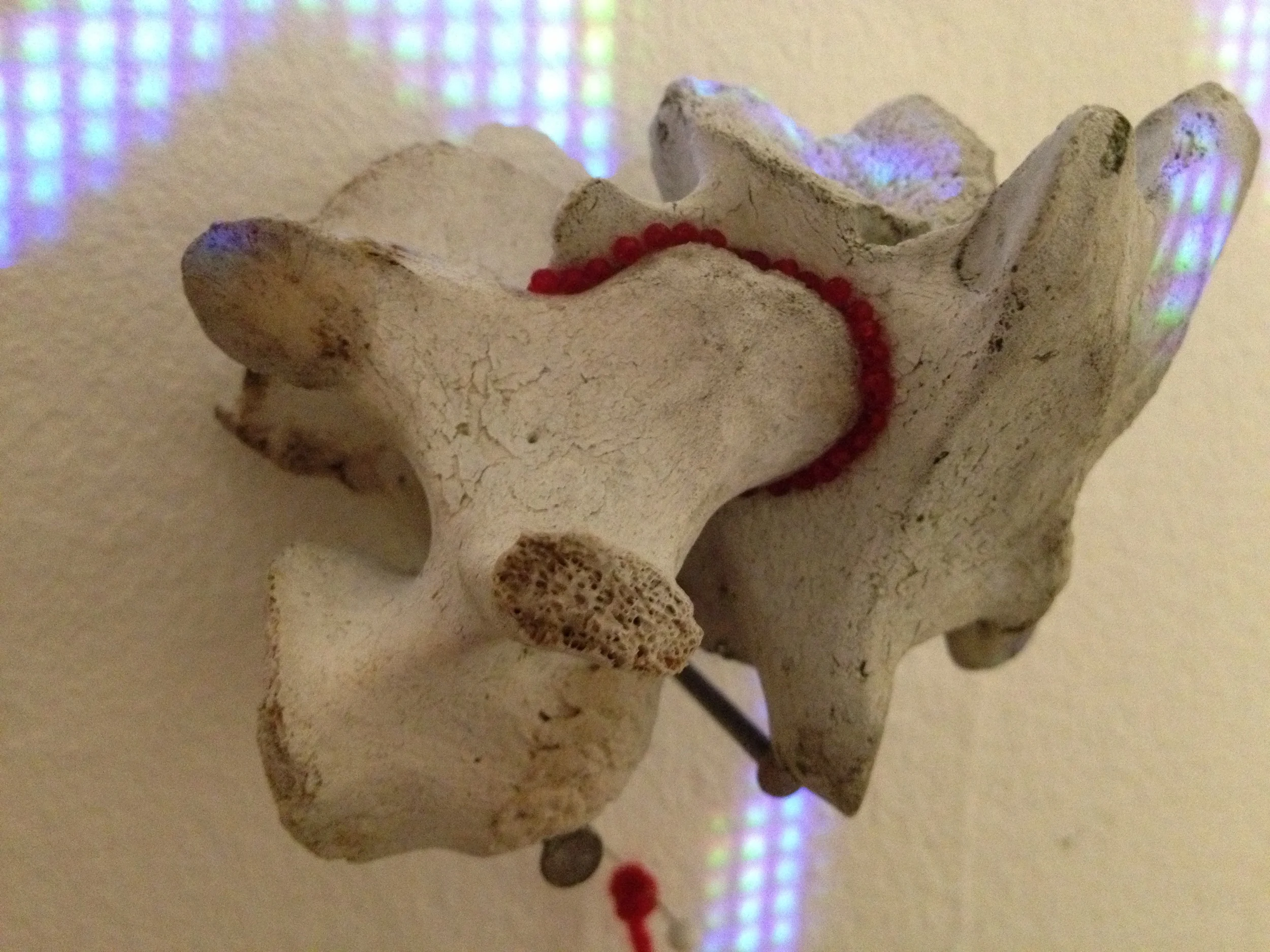















This performative installation explores the real connections that Northerners have to place, and to each other, while also tracing new relationships of story telling as a visual event.
(stolons) includes stories being gathered and responded to in a visually directed manner inside a bush tent, which acted as a mobile studio space as well as functioned an installation based work for the duration of the exhibition. The exhibition evolved and changed, and as time progressed new artworks are added to the space. The installation also included a projected image, which was created from glitch art (aesthetic computer errors), that originally consisted of images of Northwest Territories waterways, traditional Dene beadwork, and historically-based images of significant news events.
In the Northern tradition of oral sharing, stories are at the same time: individual and communal, original and replicated, authored and authorless.[1] Each time a story is told, it is added to, taking on the personal experience of the teller, while still maintaining important messages and truths. A story, as culture, is alive. It is through this process of exchange that knowledge is kept relevant and breathing.
As the title suggests, (stolons) refers to the horizontal interconnections between organisms, and is linked to the ways in which contemporary Northern culture is expressed through relationships to people, and the land. Seeking to evolve personal and collective narratives of the North, this project attempts to understand the roles that story telling plays experience of place.
Northerners have contributed stories, through sharing with me a personal memory, thought, or description a place in/of the Northwest Territories that is particularly important to them. These offerings illustrate a variety of emotions and perspectives to express the complexities of life in the North – through stories that are old, new, funny, sad, scary, heart-breaking, and heart-warming.
The Fort MacPherson bush tent in this installation functions as a mobile art studio, full of these stories, experiences, and materials. The tent creates a private space inside of the shelter of the larger public gallery, in order to examine the nature of public and private space. It also is symbolic of the impermanent and fleeting nature or stories and memory. Emanating from the tent are cords connecting the physical stories to their visual depictions on the adjacent wall - these will develop and be added to as time progresses and new work that is created throughout the artist’s time in the gallery. As the process of exchange and respectful harvesting are very important in the North, and within my practice, each of these artworks created are being offered back to the storyteller following the project.
[1] Candace Hopkins, “Making Things Our Own: The Indigenous Aesthetic in Digital Storytelling”, Leonardo, Volume 39, Number 4, MIT Press, (August 2006), 341-342.

Fort MacPherson bush tent, mixed media, single image projection
2013-ongoing
Exhibited:
Prince of Wales Northern Heritage Centre, Yellowknife, NT, September 2014
http://www.pwnhc.ca/events/courtney-chetwynd-stolons/
Centrespace Gallery, Visual Research Centre, University of Dundee, Dundee, Scotland, UK, September 2013.